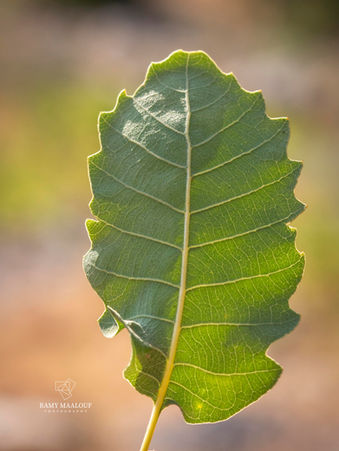Family |
Fagaceae
Quercus infectoria subsp. veneris
(A.Kern.) Meikle
Quercus infectoria subsp. veneris (A.Kern.) Meikle
≡ Quercus infectoria subsp. boissieri (Reut.) A.Camus
≡ Quercus boissieri Reut.
(First published as Quercus infectoria subsp. veneris in Fl. Cyprus 2: 1479; 1985. Treated by Mouterde, Nouvelle Flore du Liban et de la Syrie, vol. 2, p. 361; Pl. CXVII nº 3; 1966, under Quercus infectoria Oliv. and var. boissieri (Reut.) Nabelek)
• Life-form & habit: Tree to 10 m or more, with a rather sparse crown and not majestic in old age. Bark grey, scaly, not corky. Young twigs grey, often villous-tomentose, later glabrescent.
• Leaves: Semi-persistent, subcoriaceous, very variable in shape (ovate, oblong, or elliptic), margins irregularly dentate-mucronate, crenate, sinuate, or entire. Generally glabrous at maturity on both faces, occasionally retaining some hairs near veins. Petiole 5–20 mm.
• Inflorescence & flowers: Male catkins short, with tomentose involucres; female flowers on short to elongated peduncles.
• Fruit: Acorns borne on variable peduncles (short to 2 cm), cupules grey, of appressed scales; acorn often protruding. Usually 2–4 acorns per peduncle.
• Phenology: Flowers in spring; acorns ripen in autumn of the same year.
• Habitat & elevation: Rocky slopes, montane woodlands, often intermixed with other deciduous oaks.
• Lebanese distribution (Mouterde): Frequent, especially in Mount Lebanon (e.g. Hadeth Cedars, Barouk, etc.).
• Syrian distribution (Mouterde): Coastal mountains (Jabal Cassius) and Anti-Lebanon.
• Native range: Cyprus, East Aegean Is., Iran, Iraq, Lebanon, Syria, Palestine, Transcaucasus, Türkey. (POWO)
⚠️ Taxonomic note:
Mouterde (1966) retained Quercus infectoria in a broad sense with varieties (boissieri, petiolaris, latifolia), hesitating to separate the Levantine populations from Anatolian Q. infectoria s.str. Later, A. Camus treated boissieri as a subspecies; Schwarz even raised it to species rank (Q. boissieri). Modern consensus, following Meikle (1985, Flora of Cyprus) and subsequent oak systematics, places Levantine material under Q. infectoria subsp. veneris. This taxon is the main “gall oak” of the eastern Mediterranean.














